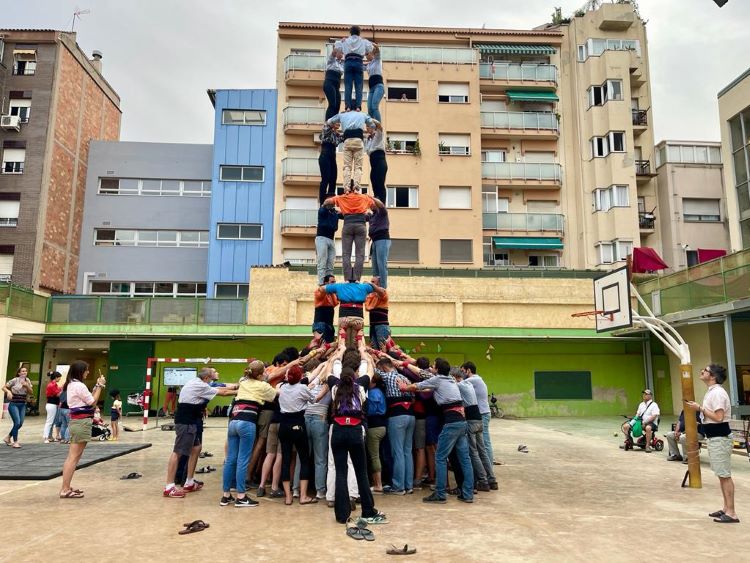Catalonia’s ‘castell’ human tower season is back
Summertime ‘festa majors’ are ideal for discovering ‘casteller’ culture

Sant Joan marks not only the beginning of summer in Catalonia - yes, a few days after the actual summer solstice - but the beginning of its ‘castell’ human tower season.
And June 24, the Festa Major de Sant Joan in the southern Catalonia town of Valls, home of the calçot onion, is generally considered to be the first important date for the 'món casteller' - that is to say, for human tower enthusiasts.
“Doing ‘castells’ has been a popular activity for more than 200 years and they are always associated with traditional celebrations such as (‘festa major’) village fairs,” Ignasi Escamilla, of the Catalan human tower groups association, told Catalan News recently.
Listen to our latest Filling the Sink podcast episode to learn more about 'Castells'
Beyond ‘festa majors’ another key event is Tarragona’s biennial ‘Concurs de Castells’ contest. Held in the old Tarraco Arena Plaça bullring as summer comes to an end, it attracts Catalonia’s best ‘casteller’ groups, or ‘colles’, as well a few thousand spectators. This year’s ‘Concurs de Castells’ is set to be more exciting than ever for ‘casteller’ devotees, especially as the 2020 edition was canceled because of the pandemic.
Other upcoming human tower events can be found here.
Castellers de Sants
Barcelona’s Castellers de Sants, also known as the “Borinots” (or “rascals” in English), get together at least twice a week in a local primary school gym to practice building gravity-defying structures.
“It's one of the few things you can do with your grandfather or grandmother and parents and kids, all together as a family,” Pol, one of the group’s members told Catalan News.
Indeed, people young and old - and of all shapes and sizes! - take part in the tradition.
“I'm here since the foundation of the team, the Castellers de Sants. That was in 1993, 29 years ago,” Andreu, the trainer’s assistant, explained. “When I started I was very young. Now my daughters are climbing on the human towers!”
But there’s clearly much more to castells and the ‘colla’ culture than simply building human towers. The Castellers de Sants, for one, attracts people from all over the neighborhood and helps foster a strong sense of community among members.
“It’s a meeting point for people of the neighborhood,” Andreu said. “Some people here work in the market, some are students, some are… everything you can imagine from the neighborhood is here and it's a very rich place to know each other.”
What are 'castells'?
Catalonia's 'castells' were declared an intangible heritage of humanity by UNESCO in 2010.
Large ‘colles’ form tiers of differing numbers of people standing on the shoulders of those below them.
Built to the sound of ‘gralla’ flutes and drums, human towers are only complete once a helmet-donning child called the ‘enxaneta’ ascends to the very top of the structure and raises their arm.
According to Escamilla, however, ‘castells’ are more than just a thing of beauty: “They are a good example of an ideal society. It's the achievement of common goals obtained thanks to the cooperation of different team members.”